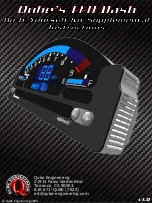
MASTER CYLINDER AND BRAKE FLUID
LEVEL INSPECTION
1) Check master cylinder and reservoir tank for crack, damage
and brake fluid leakage. If any faulty condition exists, correct or
replace.
2) Check that brake fluid level is between MAX and MIN marks on
reservoir tank.
NOTE:
Be sure to use particular brake fluid either as indicated on res-
ervoir cap of that vehicle or recommended in owner’s manual
which comes along with that vehicle. Use of any other fluid is
strictly prohibited.
Fluid level should be between MIN and MAX lines marked on
reservoir.
When brake warning light lights sometimes during driving, re-
plenish fluid to MAX level.
When fluid decreases quickly, inspect brake system for leak-
age. Correct leaky points and then refill to specified level.
CAUTION:
Do not use shock absorber fluid or any other fluid which
contains mineral oil. Do not use a container which has
been used for mineral oil or a container which is wet from
water. Mineral oil will cause swelling and distortion of
rubber parts in hydraulic brake system and water mixed
into brake fluid will lower fluid boiling point. Keep all fluid
containers capped to prevent contamination.
BRAKE HOSE AND PIPE INSPECTION
HOSE
The flexible hydraulic brake hose, which transmits hydraulic pres-
sure from steel brake line on the body to rear cylinders and to front
calipers, should be inspected at least twice a year. The brake hose
assembly should be checked for road hazard damage, for cracks
and chafing of outer cover, for leaks and blisters. A light and mirror
may be needed for an adequate inspection. If any of the above
conditions are observed on brake hose, it will be necessary to re-
place it.
PIPE
Inspect the pipe for damage, cracks, dents and corrosion. If any de-
fect is found, replace it.
5-10
BRAKES
















































